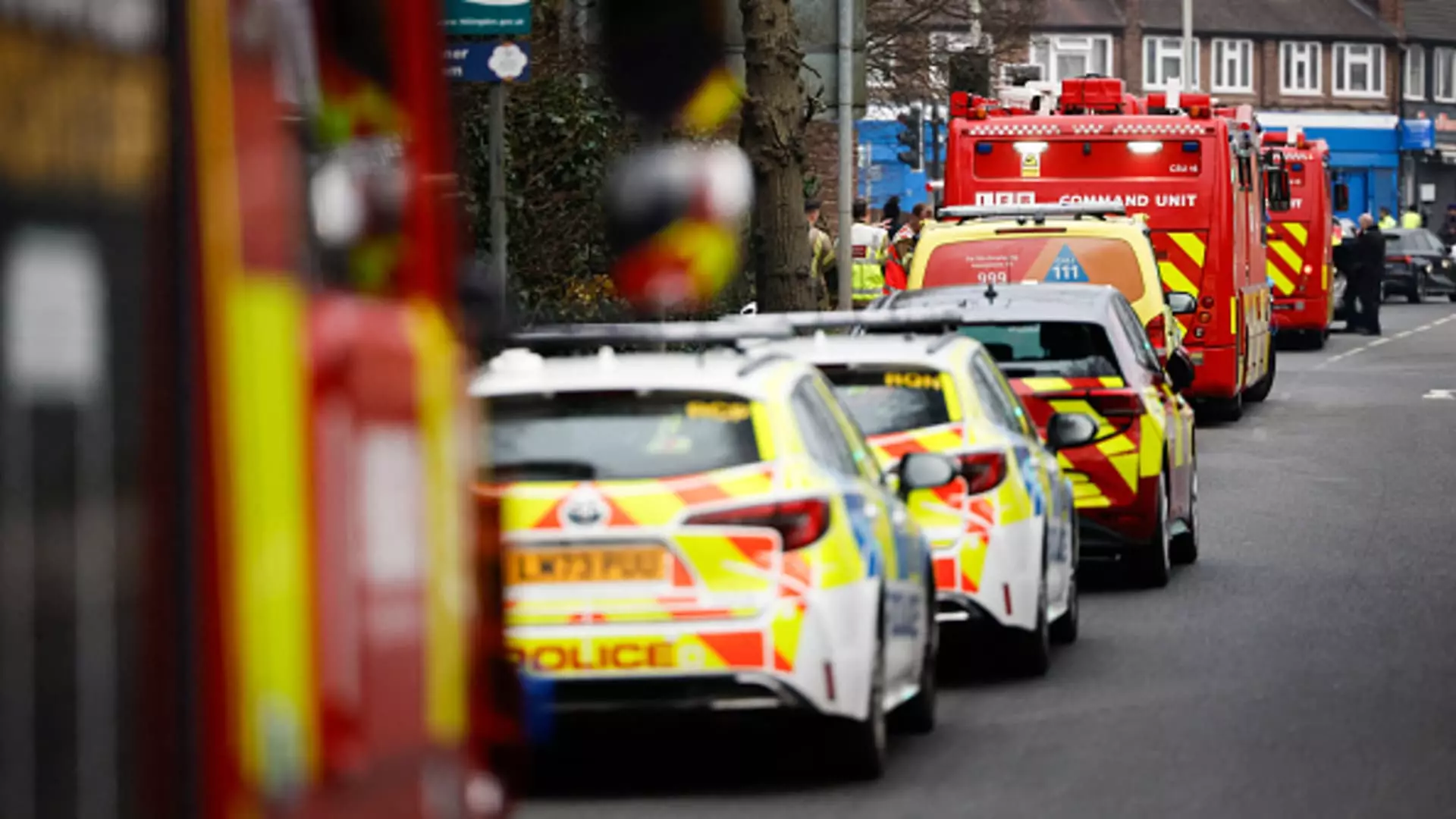At the heart of London, Heathrow Airport – a global beacon of connectivity and the largest airport in the UK – was brought to a grinding halt due to a catastrophic fire at an electrical substation. This sudden incident on a seemingly routine Friday generated far-reaching ramifications, not merely for those attempting to travel but for the interconnected web of international logistics and commerce that revolves around this pivotal transport hub. The shutdown extended until late evening, with waves of disruption rippling through the schedules of hundreds of flights, leaving travelers grappling with anxiety and uncertainty.
With 679 flights scheduled to touch down and 678 set to take off on the fateful day, the numbers alone illustrate the sheer magnitude of the chaos unleashed by this unforeseen disaster. The intricate choreography of aviation, which requires meticulous planning and coordination, was thrown into disarray. For travelers already laden with the burdens of modern-day globetrotting, this event was the proverbial last straw. Agitated passengers now found themselves stuck either waiting, redirected, or scrambling to secure alternative arrangements, thus amplifying their frustrations.
Airline Responses: A Balancing Act of Crisis Management
In the aftermath of this debacle, airlines rushed to disseminate information and provide guidance to affected passengers, but the task proved Herculean. British Airways, which is emblematic of the UK’s aviation industry, advised travelers not to make their way to the airport under any circumstance. Their statement articulated the depth of the impact: “This clearly will have a significant effect on our operations and our customers.” While striving to redirect inbound flights destined for Heathrow to other UK airports, the logistics of managing this upheaval remained overwhelming.
International carriers such as Singapore Airlines stepped in to assist their passengers, revealing the difficult decisions faced within the industry. Flights were rerouted to alternate airports across Europe, and the logistical nightmare of canceling numerous departures was compounded by the need to provide adequate assistance to displaced travelers. It is noteworthy how airlines like Emirates canceled six flights and evolved their travel protocols in real-time, attempting to offer some semblance of order amid chaos. Passengers were left grappling with the ramifications of their disrupted itineraries, further underscoring the ripple effect of what may seem like a localized disaster.
The Broader Impact on Travel
The incident at Heathrow illuminated systemic vulnerabilities inherent in global travel networks. The cascading cancellations and diversions rippled through the international travel landscape, rendering many interconnected flights simply untenable. United Airlines lamented the necessity to divert their flights or see them return to their origins, scratching their heads over how to ease the burdensome reality for their customers. Swiss International Air Lines canceled all flights to Heathrow that day, potentially affecting close to 3,000 customers poised to travel.
As these major carriers navigated the tumult, they were forced to reinvent their operations on the fly, seeking alternative airports for landings while planning for a rapid return to normalcy. The unfortunate reality is that infrastructure failures can occur at any hub and can lay bare the dilapidated emergency response plans that underpin the very foundation of air travel.
Travelers’ Frustrations: The Human Element
Caught in the maelstrom of missed flights and altered pathways, the human element of this disaster cannot be understated. Stranded passengers found themselves not only grappling with logistical nightmares but also enduring emotional turmoil. The dread of uncertainty loomed large, with faces etched with frustration and disbelief as they navigated the many layers of confusion. The script for a traveler’s day spiraled into chaos, a poignant reminder of the vulnerability inherent in air travel.
Hotels nearest the airport, typically abuzz with activity, turned into makeshift shelters for affected patrons. The collective sense of community spirit that often characterizes travel was overshadowed by feelings of isolation and overwhelm. Amid this turmoil, the questions remain: how prepared are we for unforeseen challenges? And more importantly, do we truly appreciate the fragile nature of our modern travel convenience that comes with such significant risk? It is future incidents of this nature that may prompt a reevaluation of contingency strategies in our highly networked world of air travel.


Leave a Reply